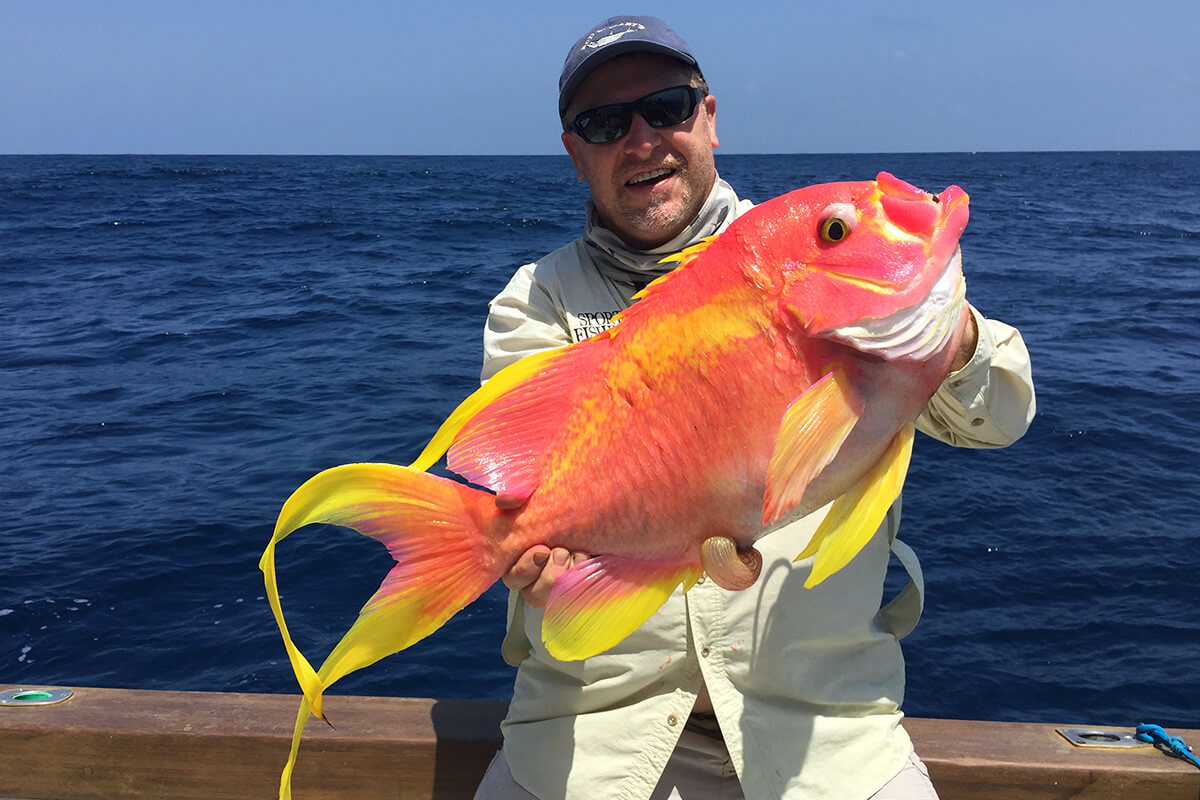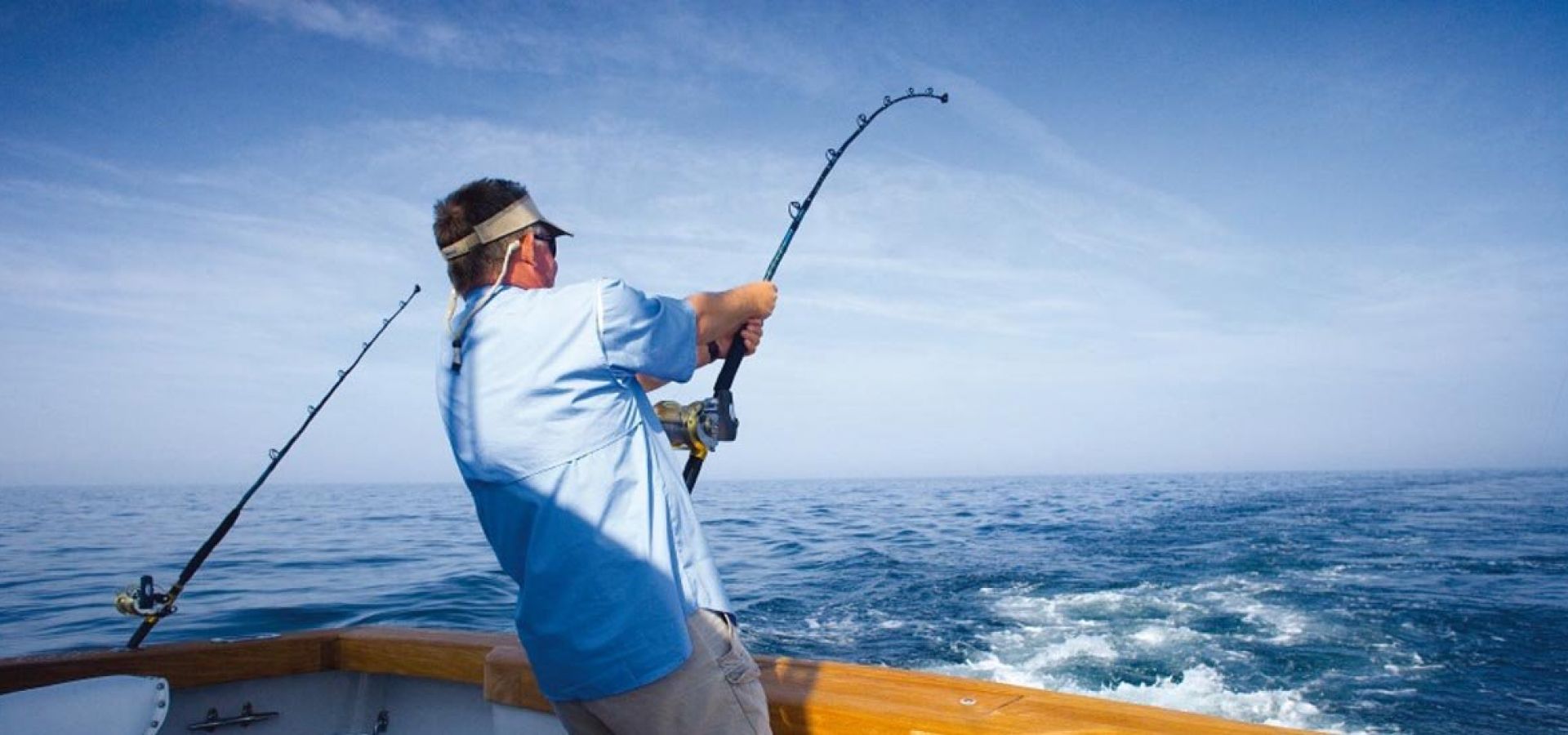Kenya Fishing Seasons best time :
January
January is the perfect time for Billfishing in Kenya! Blue, Black, and Striped Marlin are at their peak, as is Sailfish. Head to the undersea mountains for Swordfishing to top it all off!
February
The northerly wind assures calm seas at this time of year. A day of fishing off the coast of Kenya will have you hooking into Billfish left and right!
March
Casting lines anywhere from Malindi to Shimoni will have you catching Marlin, Sailfish, Wahoo, and Mahi Mahi. With the rainy season up ahead, this may be your last chance for a while.
April
It’s wet season in Kenya, which means the seas are too rough for sailing. With luck, you can enjoy a few weeks of good fishing at the start of April before charter boats start shutting down.
May
As Kenya’s rainy seasons continues, charter operators are pulling their boats out of the water for maintenance. Anglers can use this time to explore the mountain streams and desert lakes.
June
Try your luck in Lakes Turkana and Victoria for massive Nile Perch, or enjoy fishing for Rainbow and Brown Trout in Kenya’s mountain streams.
July
The northerly wind will be returning soon as Kenya’s wet season comes to a close this month. Until then, most fishing opportunities are limited to the country’s lakes and rivers.
August
Kenya’s deep sea fishing season reopens this month, and you’ll have a good chance of catching Yellowfin Tuna, Wahoo, Giant Trevally, and Black Marlin, among others.
September
Wahoo and Yellowfin are at their peak in September, accompanied by smaller numbers of King Mackerel and Trevally. Peak Billfishing season is months away, but a stray Marlin might surprise you!
October
In October, you can continue to expect excellent fishing for Yellowfin Tuna and Wahoo. There’s always a possibility that you’ll find Swordfish, Black Marlin, and much more at the end of your line.
November
As Marlin season approaches, the possibilities keep on growing. Yellowfin Tuna and Wahoo are still hunting bait fish close to shore, as Blue, Black, and Striped Marlin begin to appear more.
December
December is one of the best times for deep sea fishing in Kenya. Sailfish, Swordfish, Wahoo, and Blue, Black, and Striped Marlin are all here to make this holiday season a memorable one!
Activities :
Deep-sea fish are fish that live in the darkness below the sunlit surface waters, that is below the epipelagic or photic zone of the sea. The lanternfish is, by far, the most common deep-sea fish. Other deep sea fishes include the flashlight fish, cookiecutter shark, bristlemouths, anglerfish, viperfish, and some species of eelpout.
Only about 2% of known marine species inhabit the pelagic environment. This means that they live in the water column as opposed to the benthic organisms that live in or on the sea floor.[1] Deep-sea organisms generally inhabit bathypelagic (1000–4000m deep) and abyssopelagic (4000–6000m deep) zones. However, characteristics of deep-sea organisms, such as bioluminescence can be seen in the mesopelagic (200–1000m deep) zone as well. The mesopelagic zone is the disphotic zone, meaning light there is minimal but still measurable. The oxygen minimum layer exists somewhere between a depth of 700m and 1000m deep depending on the place in the ocean. This area is also where nutrients are most abundant. The bathypelagic and abyssopelagic zones are aphotic, meaning that no light penetrates this area of the ocean. These zones make up about 75% of the inhabitable ocean space.
The epipelagic zone (0–200m) is the area where light penetrates the water and photosynthesis occurs. This is also known as the photic zone. Because this typically extends only a few hundred meters below the water, the deep sea, about 90% of the ocean volume, is in darkness. The deep sea is also an extremely hostile environment, with temperatures that rarely exceed 3 °C (37.4 °F) and fall as low as −1.8 °C (28.76 °F) (with the exception of hydrothermal vent ecosystems that can exceed 350 °C, or 662 °F), low oxygen levels, and pressures between 20 and 1,000 atmospheres.
Uniqueness :
WASHINGTON (Reuters) – While people and other vertebrates are color blind in dim light, some deep-sea fish may possess keen color vision to thrive in the near total darkness of their extreme environment thanks to a unique genetic adaptation, scientists said on Thursday.
The deep-sea lanternfish (Myctophiformes) is seen in this undated image released in Prague, Czech Republic on May 9, 2019. Zuzana Musilova/Charles University/Handout via REUTERS Researchers analyzed the genomes of 101 fish species and found that three lineages of deep-sea fish, living up to about a mile (1,500 meters) below the surface, boast a specialized visual system to allow for color vision in inky blackness.
Having acute vision could provide tremendous advantages to these fish as they search for food and mates and try to avoid becoming another creature’s dinner in the exotic dark world of the ocean depths, the planet’s largest habitat.“Their eyes are certainly much more sensitive, so we believe their vision in the depths would be very good,” said evolutionary biologist Zuzana Musilova of Charles University in Prague, one of the researchers in the study published in the journal Science.
Vertebrates use two types of photoreceptor cells in the retina to see: light-sensitive so-called rods and cones. The cones are employed in bright-light conditions and perceive colors. The rods are used in dim light, not geared to detect colors.Rod cells contain a single type of photopigment – pigments that react to a certain wavelength of light – called rhodopsin. The researchers found 13 species from the three lineages of deep-sea fish that had a proliferation of genes controlling rhodopsin, apparently letting the fish use rods to detect colors. One species, the silver spinyfin, had 38 copies of the rhodopsin gene, rather than the usual one.
The spinyfin, with a bright silver body, has an almost circular body shape and large eyes. Other fish with this visual system include the extremely elongated tube-eye fish and the bioluminescent lanternfish.“They very likely are able to see color purely by rods, which is unique among vertebrates,” Musilova said.
Advertisement
These fish are smallish, up to a foot (30 cm) long, eating plankton and shrimps at depths mostly between one-quarter to three-quarters of a mile (400-1,200 meters).Residual surface light reaches down to about six-tenths of a mile (1,000 meters). Light also emanates from bioluminescent creatures common in the deep ocean including the anglerfish, which has a glowing lure attached to its head to attract prey.



